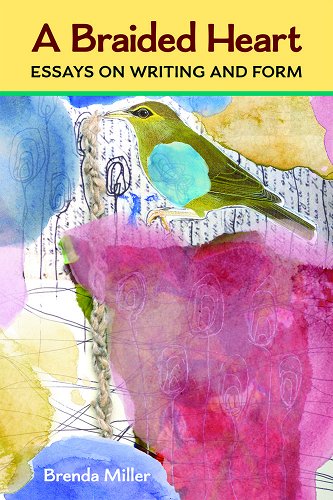Reviewed by Melissa Oliveira
 On the first day of a creative nonfiction workshop a few years ago, I found myself sitting around a table trying to explain the sort of essay I’d recently fallen in love with and hoped to try writing. I knew it was called a lyric essay; I’d just picked up that phrase. But when it came down to describing it, I couldn’t quite put my finger on what exactly it was that brought Maggie Nelson, Lia Purpura, Claudia Rankine, Jill Talbot, Eula Biss and the pieces I found in journals like The Seneca Review, Brevity, and Hippocampus all under the same hat.
On the first day of a creative nonfiction workshop a few years ago, I found myself sitting around a table trying to explain the sort of essay I’d recently fallen in love with and hoped to try writing. I knew it was called a lyric essay; I’d just picked up that phrase. But when it came down to describing it, I couldn’t quite put my finger on what exactly it was that brought Maggie Nelson, Lia Purpura, Claudia Rankine, Jill Talbot, Eula Biss and the pieces I found in journals like The Seneca Review, Brevity, and Hippocampus all under the same hat.
I parroted phrases I’d read, like poetic compression and associative transitions, nonlinear and impressionistic, with every word out of my mouth while actually hiding what I was feeling about this hybrid form. That is to say, I was off-the-wall excited at having discovered it. Its beauty, evocativeness and adaptability floored me and, having tracked down as many examples as I could, I wanted to have a shot at writing some. But without being able even to describe the lyric essay, whose ample white space and hermit crabs, braids and mosaics were such simple-seeming vehicles for deep emotional complexity, how could I write them? I grew discouraged over time, aware of all the things I didn’t know about the lyric essay and wishing for a guide. A Braided Heart: Essays on Writing and Form by Brenda Miller (University of Michigan Press, 2021) is the book I wish I had all those years ago.
At 148 pages, A Braided Heart: runs a bit shorter than many books on craft or the writing life, but it’s heavy on insight. Take this description of the form: “There are gaps, moments of silence, other voices, and/or a magnification of a single moment in time: all these techniques signal to a reader that we’re in a realm where there is no absolute truth, where imagination will come into play.” Or this one, in which Miller describes that lyric essay as “a place where definitions are constantly in flux, a place where answers are not as important as the questions to which they give rise.” Part meditation, part analysis and part a book on craft, A Braided Heart’s three main sections are dedicated to exploring the lyric essay’s various facets.
The first section contains essays about the production of writing, both literal and not: through handwriting with thick pencils, tiny pens, and typing. Here Miller introduces the idea that “allowing form to dictate content” can guide you, even if it is just forming the letters on a page in an unpracticed hand: “Once I get going, the writing feels leisurely. There is no other way to put it: thought follows thought in a way I rarely allow myself at the computer.” This section is also a story of Miller’s development as a writer, from the technical (learning cursive in childhood and rediscovering writing in longhand as an adult) to the vocational (falling in and out of love with journalism and time spent at a writing retreat).
In the second section, Miller veers slightly more into the topics of structure and craft. This is where you’ll find the eponymous piece, “A Braided Heart: Shaping the Lyric Essay,” a braided essay about braided essays and challah bread. It’s both a great essay in its own right and a wonderful illustration of form, and it might be my favorite in the volume. That said, I wish I’d had access to Miller’s “The Fine Art of Containment in Creative Nonfiction” during those times I’ve found myself in the middle of writing an essay that, for all its lyricism and observation, goes absolutely nowhere. Here, Miller offers valuable advice about using a “container scene” to provide narrative movement where there’s no overt plot to bring the story forward.
Section Three has a bit more analysis of other work. I found myself scribbling down the names of essayists that Miller teaches. As with any good teacher, Miller offers insight and plenty of resources in an approachable tone. Having walked through the different forms earlier, Miller starts looking more closely at some favorites, like Truth Serum by Bernard Cooper and Bough Down by Karen Green. There’s also emphasis on form. In “Cables, Chains, and Lariats: Form as Process” and elsewhere in the book, there’s a repeated theme of letting the forms (i.e. adopted forms, as in hermit crab essays) and their constraints guide the content. This idea won’t be new to poets but it felt novel for essay writing and could help save a few shapeless drafts.
Readers might already be familiar with Miller’s Tell It Slant, an excellent general text on writing creative nonfiction with prompts. A Braided Heart: Essays on Writing and Form relaxes entirely into the lyric essay and remains there, and its approachable and chatty tone make it really fun to read. I loved it for its focus on the form, process and meditations on hybridity, which reminded me a bit of Family Resemblance, an anthology on hybrid forms edited by Marcela Sulak and Jacqueline Kolosov, and Randon Billings Noble’s more recent A Harp in the Stars: An Anthology of Lyric Essays, only with more guidance that can help a writer really start working in this hybrid form.

Melissa Oliveira
ReviewerMelissa Oliveira’s writing has appeared or is forthcoming in Ploughshares Solos, Agni, Pleiades, Calyx and others. Her previous work has garnered a Best American Essays Notable listing, a Best of the Net nomination and an honorable mention from Glimmer Train Stories. Her reviews have appeared in The Kenyon Review Online, Brevity, The Rumpus and more. Melissa currently lives in Berlin, Germany, where she is working on a novel-in-stories about the divided city.


